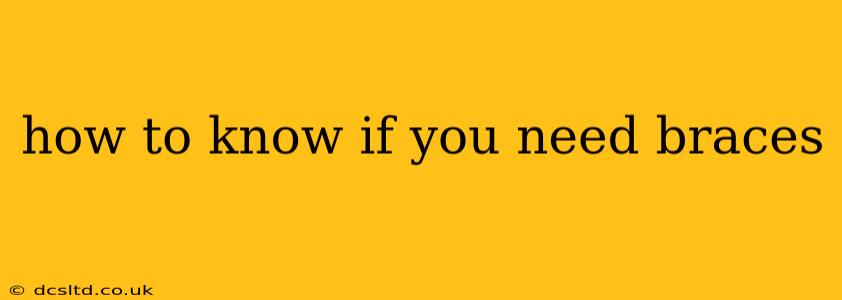Considering braces? It's a big decision, impacting both your appearance and oral health. This comprehensive guide will help you understand the signs you might need orthodontic treatment, demystifying the process and empowering you to make an informed choice.
What are the Signs You Might Need Braces?
Many factors indicate whether braces are necessary. While only a qualified orthodontist can provide a definitive diagnosis, here are some key signs to watch out for:
-
Crowded Teeth: This is a very common reason for seeking orthodontic treatment. If your teeth are overlapping or too tightly packed, it can make cleaning difficult, leading to cavities and gum disease. Crowding can also affect your bite and jaw alignment.
-
Gapped Teeth (Diastema): While some gaps might be considered aesthetically pleasing, significant spaces between teeth can impact your bite and potentially lead to speech problems.
-
Overbite: An overbite occurs when your upper front teeth significantly overlap your lower front teeth. Severe overbites can cause excessive wear on your teeth and jaw pain.
-
Underbite: An underbite is the opposite of an overbite, where your lower teeth protrude beyond your upper teeth. This can lead to jaw pain, temporomandibular joint (TMJ) disorders, and difficulty chewing.
-
Crossbite: A crossbite happens when your upper teeth bite inside your lower teeth. This can cause uneven wear on your teeth and jaw misalignment.
-
Open Bite: An open bite is when there's a vertical gap between your upper and lower front teeth when you bite down. This can affect your ability to chew properly and may lead to speech difficulties.
-
Difficulty Chewing or Biting: Persistent problems with chewing or biting food could indicate a bite problem requiring orthodontic correction.
-
Jaw Pain or Clicking: Pain or clicking in your jaw joint (TMJ) could be a sign of a misaligned bite. This warrants a visit to both your dentist and an orthodontist.
-
Speech Problems: In some cases, misaligned teeth can affect your speech clarity.
-
Worn Teeth: If you notice excessive wear on your teeth, it could signal a bite problem needing correction.
How Can I Tell if My Bite is Bad?
Assessing your bite accurately requires a professional evaluation. However, you can perform a simple self-check:
- Close your mouth naturally. Observe how your upper and lower teeth align. Any significant misalignment should be reviewed by a professional.
- Bite down gently. Feel for any discomfort, pain, or clicking in your jaw joint.
- Check for gaps or crowding. Note any spaces between your teeth or overlapping.
Remember, this self-check is not a substitute for a professional examination. It’s merely a preliminary assessment to help you determine if you should schedule an appointment.
What Happens During a Consultation with an Orthodontist?
During your consultation, the orthodontist will perform a thorough examination, including:
- Medical and dental history review: The orthodontist will want to know about your overall health and dental history.
- Oral examination: They'll examine your teeth, gums, and jaw alignment.
- X-rays: X-rays provide a detailed view of your teeth and jaw structure.
- Photographs: Photographs help document your current condition and track progress.
- Models of your teeth: Impressions of your teeth will be taken to create models for accurate diagnosis and treatment planning.
Based on this comprehensive evaluation, the orthodontist will discuss your treatment options, including the type of braces (traditional metal, ceramic, Invisalign, etc.) most appropriate for your needs.
Are Braces Only for Cosmetic Purposes?
While aesthetics play a role, braces offer significant benefits beyond improving the appearance of your smile. They can:
- Improve chewing and biting functions.
- Reduce the risk of cavities and gum disease.
- Correct speech impediments.
- Alleviate jaw pain and TMJ disorders.
- Improve overall oral health and confidence.
When Should I See an Orthodontist?
Ideally, children should have their first orthodontic evaluation around age 7. This allows for early intervention if necessary, potentially reducing the complexity and duration of treatment. Adults can also benefit from orthodontic treatment at any age. If you suspect you might need braces, scheduling a consultation is the best way to get the answers you need.
This guide offers helpful information, but remember to consult a qualified orthodontist for a proper diagnosis and treatment plan. They are the best source of information for your specific situation.
